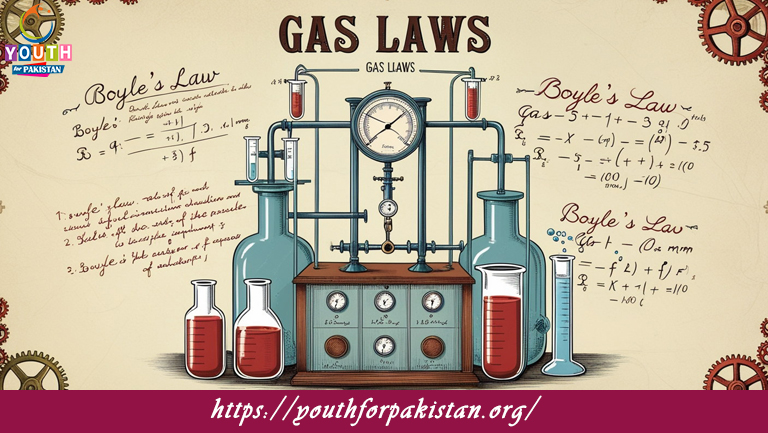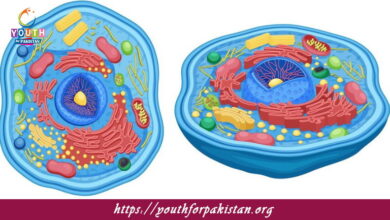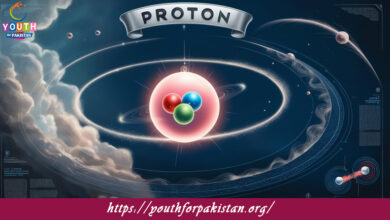Gas Laws MDCAT MCQs with Answers

Welcome to the Gas Laws MDCAT MCQs with Answers. In this post, we have shared Gas Laws Multiple Choice Questions and Answers for PMC MDCAT 2024. Each question in MDCAT Chemistry offers a chance to enhance your knowledge regarding Gas Laws MCQs in this MDCAT Online Test.
Which gas law states that the volume of a gas is directly proportional to its temperature at constant pressure?
a) Boyle’s Law
b) Charles’s Law
c) Gay-Lussac’s Law
d) Avogadro’s Law
The Ideal Gas Law combines which of the following laws?
a) Boyle’s Law, Charles’s Law, and Avogadro’s Law
b) Charles’s Law and Gay-Lussac’s Law
c) Boyle’s Law and Gay-Lussac’s Law
d) Avogadro’s Law and Dalton’s Law
What is the general formula for the Ideal Gas Law?
a) PV = nRT
b) P/T = nV
c) V/T = nP
d) PV = nR
Which law states that the pressure of a gas is directly proportional to its temperature at constant volume?
a) Boyle’s Law
b) Charles’s Law
c) Gay-Lussac’s Law
d) Avogadro’s Law
According to Avogadro’s Law, equal volumes of gases at the same temperature and pressure contain:
a) Different numbers of moles
b) Different masses
c) Equal numbers of moles
d) Different temperatures
What is the standard temperature and pressure (STP) for gases?
a) 0°C and 1 atm
b) 25°C and 1 atm
c) 0°C and 760 mmHg
d) 20°C and 1 atm
Which of the following is NOT a gas law?
a) Dalton’s Law
b) Graham’s Law
c) Henry’s Law
d) Avogadro’s Law
In the combined gas law, which of the following is held constant?
a) Volume
b) Pressure
c) Temperature
d) Number of moles
The law that relates the partial pressure of each gas in a mixture to the total pressure of the gas mixture is:
a) Boyle’s Law
b) Charles’s Law
c) Dalton’s Law
d) Graham’s Law
If a gas occupies 5 L at 2 atm, what will be its volume at 1 atm, assuming constant temperature?
a) 2.5 L
b) 5 L
c) 10 L
d) 20 L
According to Charles’s Law, if the temperature of a gas is increased from 200 K to 400 K, its volume will:
a) Decrease by half
b) Remain the same
c) Double
d) Quadruple
Which gas law describes the rate of effusion of a gas?
a) Boyle’s Law
b) Charles’s Law
c) Graham’s Law
d) Avogadro’s Law
What does the term “molar volume” refer to in the context of gases?
a) Volume of gas per mole at STP
b) Volume of gas per gram
c) Volume of gas per liter
d) Volume of gas per kilogram
Which gas law states that the volume of a gas is directly proportional to the number of moles of gas at constant temperature and pressure?
a) Boyle’s Law
b) Charles’s Law
c) Gay-Lussac’s Law
d) Avogadro’s Law
The gas law that is derived from the combination of Boyle’s Law and Charles’s Law is known as:
a) Dalton’s Law
b) Ideal Gas Law
c) Avogadro’s Law
d) Graham’s Law
The relationship between pressure and volume for a fixed amount of gas at constant temperature is expressed by:
a) Charles’s Law
b) Gay-Lussac’s Law
c) Boyle’s Law
d) Avogadro’s Law
If a gas at 1 atm pressure is compressed from 10 L to 5 L, what will be the final pressure of the gas?
a) 0.5 atm
b) 1 atm
c) 2 atm
d) 5 atm
Which of the following laws would be used to calculate the volume of a gas if the number of moles and temperature are changed but the pressure is kept constant?
a) Charles’s Law
b) Boyle’s Law
c) Dalton’s Law
d) Graham’s Law
The total pressure exerted by a gas mixture is the sum of the partial pressures of the individual gases. This statement describes:
a) Graham’s Law
b) Dalton’s Law
c) Charles’s Law
d) Avogadro’s Law
According to Gay-Lussac’s Law, if the pressure of a gas is increased from 1 atm to 3 atm, what happens to the temperature in Kelvin?
a) It decreases to one-third
b) It remains the same
c) It triples
d) It is doubled
Which gas law involves the relationship between volume and temperature of a gas, assuming pressure remains constant?
a) Boyle’s Law
b) Charles’s Law
c) Gay-Lussac’s Law
d) Avogadro’s Law
If the volume of a gas increases from 4 L to 8 L, what is the effect on pressure assuming temperature remains constant?
a) Pressure is halved
b) Pressure is doubled
c) Pressure remains the same
d) Pressure is quadrupled
Which of the following gas laws would you use to determine the effect of changing the temperature on the pressure of a gas while keeping the volume constant?
a) Boyle’s Law
b) Charles’s Law
c) Gay-Lussac’s Law
d) Avogadro’s Law
The law stating that the volume of a gas is inversely proportional to its pressure is:
a) Avogadro’s Law
b) Charles’s Law
c) Boyle’s Law
d) Gay-Lussac’s Law
What is the unit of the gas constant (R) in the Ideal Gas Law when pressure is in atm, volume is in liters, and temperature is in Kelvin?
a) L·atm/(K·mol)
b) J/(K·mol)
c) L·Pa/(K·mol)
d) m³·Pa/(K·mol)
Which law explains why a balloon expands when heated?
a) Boyle’s Law
b) Charles’s Law
c) Dalton’s Law
d) Avogadro’s Law
If the volume of a gas is 10 L at 300 K, what will its volume be at 600 K, assuming pressure remains constant?
a) 5 L
b) 10 L
c) 20 L
d) 30 L
What is the relationship between pressure and temperature in Gay-Lussac’s Law?
a) Directly proportional
b) Inversely proportional
c) No relationship
d) Exponentially proportional
Which gas law is used to predict the pressure change when the volume and temperature are altered?
a) Boyle’s Law
b) Charles’s Law
c) Ideal Gas Law
d) Dalton’s Law
According to Boyle’s Law, if the pressure of a gas is 2 atm and its volume is 4 L, what will be its volume if the pressure is increased to 8 atm?
a) 1 L
b) 2 L
c) 4 L
d) 8 L
Which law can be used to find the relationship between the rate of effusion of two gases and their molar masses?
a) Charles’s Law
b) Boyle’s Law
c) Graham’s Law
d) Avogadro’s Law
What is the partial pressure of a gas if it constitutes 30% of a gas mixture at 1 atm total pressure?
a) 0.3 atm
b) 0.7 atm
c) 1 atm
d) 1.3 atm
The volume of a gas at STP is:
a) 22.4 L
b) 1 L
c) 10 L
d) 44.8 L
In which of the following conditions does Avogadro’s Law apply?
a) High pressure and high temperature
b) Low pressure and low temperature
c) High pressure and low temperature
d) Any condition where temperature and pressure are constant
What is the relationship between the number of moles and the volume of a gas according to Avogadro’s Law?
a) Directly proportional
b) Inversely proportional
c) No relationship
d) Exponentially proportional
Which gas law is represented by the equation PV/T = constant?
a) Boyle’s Law
b) Charles’s Law
c) Gay-Lussac’s Law
d) Combined Gas Law
What is the effect of increasing the number of moles of gas on the volume at constant temperature and pressure?
a) Volume decreases
b) Volume remains the same
c) Volume increases
d) Volume becomes zero
Which law describes the relationship between pressure and the number of moles of a gas, assuming temperature and volume are constant?
a) Boyle’s Law
b) Charles’s Law
c) Ideal Gas Law
d) Avogadro’s Law
If the pressure of a gas is 5 atm and the volume is 3 L, what is the volume if the pressure is reduced to 1 atm?
a) 0.6 L
b) 1 L
c) 3 L
d) 15 L
The combined gas law allows you to solve for changes in which variables?
a) Pressure, volume, and temperature
b) Pressure and volume only
c) Volume and temperature only
d) Pressure and temperature only
If you are interested to enhance your knowledge regarding Physics, Chemistry, Computer, and Biology please click on the link of each category, you will be redirected to dedicated website for each category.





